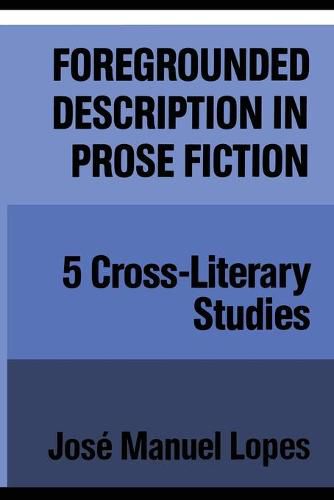Readings Newsletter
Become a Readings Member to make your shopping experience even easier.
Sign in or sign up for free!
You’re not far away from qualifying for FREE standard shipping within Australia
You’ve qualified for FREE standard shipping within Australia
The cart is loading…






In this wide-ranging study, Jose Manuel Lopes proposes a theoretical framework for analysing the role of description in prose fiction. He offers readings of texts drawn from four national literatures–French, Spanish, Portuguese, and Brazilian–testing his model across a cultural and temporal spectrum. This critical breadth also illustrates the significance of description in disparate contexts: the postmodern novel, which implicitly challenges conventional notions of foreground and background, as well as the naturalist and realist fiction of the nineteenth century.
Lopes applies his model to detailed readings of Emile Zola’s Une Page d'amour, Claude Simon’s Histoire, Benito Perez Galdos’ La de Bringas, Cornelio Penna’s A Menina Morta, and Carlos de Oliveira’s Finisterra. In addition to exploring the interplay of description and narration, these readings pay particular attention to spatial descriptions, and analyse the diverse roles of description in different contexts. After subjecting each fictional text to a detailed analysis which seeks to bring out the crucial aspects that contribute towards the foregrounding of descriptive passages (e.g., mise en abyme, parody, modes of representation), and which establishes, on occasion, certain relations that literary description may entertain with the other arts, he attempts to isolate the primary functions of foregrounding descriptions. What he seeks to demonstrate is that description constitutes a major textual component necessary for the analysis and understanding of both nineteenth- and twentieth-century fictional texts.
$9.00 standard shipping within Australia
FREE standard shipping within Australia for orders over $100.00
Express & International shipping calculated at checkout
In this wide-ranging study, Jose Manuel Lopes proposes a theoretical framework for analysing the role of description in prose fiction. He offers readings of texts drawn from four national literatures–French, Spanish, Portuguese, and Brazilian–testing his model across a cultural and temporal spectrum. This critical breadth also illustrates the significance of description in disparate contexts: the postmodern novel, which implicitly challenges conventional notions of foreground and background, as well as the naturalist and realist fiction of the nineteenth century.
Lopes applies his model to detailed readings of Emile Zola’s Une Page d'amour, Claude Simon’s Histoire, Benito Perez Galdos’ La de Bringas, Cornelio Penna’s A Menina Morta, and Carlos de Oliveira’s Finisterra. In addition to exploring the interplay of description and narration, these readings pay particular attention to spatial descriptions, and analyse the diverse roles of description in different contexts. After subjecting each fictional text to a detailed analysis which seeks to bring out the crucial aspects that contribute towards the foregrounding of descriptive passages (e.g., mise en abyme, parody, modes of representation), and which establishes, on occasion, certain relations that literary description may entertain with the other arts, he attempts to isolate the primary functions of foregrounding descriptions. What he seeks to demonstrate is that description constitutes a major textual component necessary for the analysis and understanding of both nineteenth- and twentieth-century fictional texts.